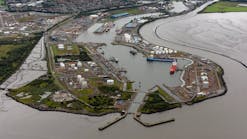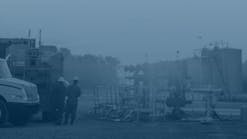The thorough defeat of Iraq at the hands of the allies may have ended the dispute over the border between Kuwait and Iraq for the time being.
But a detailed study into the historical background to the dispute compiled for the Royal Institute of International Affairs, London, concludes the problem of settling and demarcating the boundary, apparently unbridgeable the past half century, will have to be addressed again.
BOUNDARY SOLUTION STILL NEEDED
Author Richard Schofield says if the two countries are to coexist within their present boundaries, a solution will have to be found that satisfies Kuwait's legitimate security concerns and Iraq's desire for secure access to the Persian Gulf outside the Shatt al-Arab waterway.
Relying mainly on the archives of Britain's Foreign Office, the Colonial Office, and the India Office-which was responsible for the Persian Gulf area at the turn of the century and before World War 11, he has produced the most detailed review of the events that led to the creation of Kuwait and its uncertain northern boundary.
He says that close legal scrutiny does not support Iraq's inconsistent claim to absorb Kuwait but until Iraq has an access to the gulf over which it has sovereignty, the dispute will fester, and he expects it to be raised again by a government in Baghdad at some undetermined future date.
RUMAILA DISPUTE
Schofield also looks at the dispute between the two countries over the Rumaila oil field. He says no reliable geological maps are known to exist and there are two views within oil company circles over the relationship between the massive Iraqi Rumaila field, producing about 400,000 b/d before the 1990 invasion, and the much smaller Ratga field lying just within Kuwaiti territory to the immediate south.
The most popular view is that Ratga is the southern continuation of Rumaila lying on the lower slope of the main dome structure that rises in Iraq. Ratga oil is almost certainly drawn from a different level from that of the main Rumaila field in Iraq.
But he quotes the respected Lebanese geologist Z. R. Beydoun, who contends the Rumaila supergiant lies totally within Iraq.
The exact location of Ratga field is uncertain while its geology is characterized provisionally as a possible crescentic trend near and along the Iraqi border.
If this second view is correct, it is conceivable that the two oil fields are still connected indirectly by a saddle with a common aquifer.
KUWAIT OFFICIALS CONFIRM CONNECTION
But Schofield adds that Kuwait Oil Co. officials in confidence have confirmed Ratga is a geological extension of the Rumaila field.
Iraqi officials at Rumaila claim to have noticed a drop in pressure during the late 1980s as a result of Kuwait's 10,000 b/d production at Ratga.
Schofield also reports the Iraqi government accusation-during 1990 but before the invasion-that the Kuwaitis were slant drilling under the international boundary into the Rumaila reserves.
Copyright 1991 Oil & Gas Journal. All Rights Reserved.


